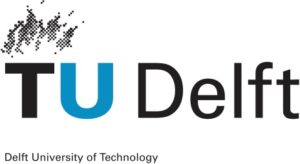|
Sensors and CMOS Interface Electronics
On-Line Class, May 6-16, 2025
|
|
Designing Smart Sensor Systems
Kofi Makinwa, TU Delft, the Netherlands
Smart Sensor Systems are systems in which sensors and dedicated interface electronics are integrated on the same chip, or at least in the same package. The design of such sensors requires a multidisciplinary approach that takes the characteristics and requirements of the whole system into account. The interface electronics needs to be designed in such a way that it does not limit sensor performance. Since sensors are often relatively slow, the necessary precision can often be achieved by the use of dynamic techniques such as chopping, auto-zeroing and dynamic element matching. As an example, the design of a state-of-the-art wind sensor will be described.
|
|
Measurement and Calibration Techniques
Michiel A.P. Pertijs, TU Delft, the Netherlands
This lecture discusses the basics of measurement and calibration. Calibration procedures are essential for establishing the accuracy of a sensor in relation to standards. The lecture discusses how smart sensors differ from conventional sensors in how they are calibrated and how they are used after calibration. Various calibration techniques are introduced, as well as various trimming and correction techniques that can be used to adjust smart sensors after calibration. The lecture also explores the possibility of realizing self-calibrating smart sensors. Various forms of self-calibration are discussed, including the co-integration of additional sensors to compensate for cross-sensitivity, and the co-integration of an actuator to generate a calibration signal locally. Three case studies, of a smart temperature sensor, a smart wind sensor and a self-calibrating Hall sensor, are included to illustrate the various concepts.
|
|
Dynamic Offset-Cancellation Techniques
Kofi Makinwa, TU Delft, the Netherlands
In modern CMOS processes, device mismatch typically results in offset voltages of several millivolts. But many sensor interfaces require much lower offset levels. By using dynamic offset cancellation techniques such as auto-zeroing and chopping, however, microvolt levels of offset can be routinely achieved. In this lecture, an introduction to the theory of auto-zeroing and chopping will be given, and the pros and cons of both techniques will be discussed. Examples will be given of the use of auto-zeroing and chopping in sensor interfaces with residual offsets as low as 50nV.
|
|
Precision Operational and Instrumentation Amplifiers
Michiel A.P. Pertijs, TU Delft, the Netherlands
To understand the problems of the designers of sensor interface circuits will help the system designer to get the best performance. The principles and features of precision instrumentation amplifiers, key building blocks of many sensor interfaces, will be discussed from a designer’s point of view. Constraints regarding noise, dynamic range, common-mode range will be discussed for circuits made in state-of-the art technology. The case studies include instrumentation amplifiers with offset cancellation, and amplifiers with rail-to-rail voltage ranges.
|
|
Physical-to-Digital Conversion
Michiel A.P. Pertijs, TU Delft, the Netherlands
Modern electronic systems employ increasing numbers of sensors to gather information about the physical world around us. This information, which is inherently non-electrical and analog in nature, needs to be digitized, often with increasingly demanding requirements on accuracy and power efficiency. This lecture presents an integral approach to designing suitable physical-to-digital converters that goes beyond the conventional approach of combining of a sensor, front-end circuit and ADC in terms of accuracy and efficiency. Different data-converter architectures suitable for sensing applications, including successive-approximation and delta-sigma modulation, are discussed. Approaches for embedding sensors into data-converter architectures are presented, including ratiometric charge-balancing architectures. These concepts are illustrated using case studies of state-of-the-art temperature-to-digital, humidity-to-digital, and light-to-digital converters.
|
|
References for Smart Sensors
Fabio Sebastiano, TU Delft, The Netherlands
Although often neglected, a reference is always required for any measurements, since measuring basically involves comparing the physical parameter of interest to a known quantity. Consequently, it is a fundamental component in any smart sensor, which can even limit the performance of the whole system if not properly designed. In this lecture, an overview of references for smart sensors will be given with specific focus on references that can be implemented on chip in a standard CMOS process. An overview of references available in CMOS will be presented, including resistance, capacitive, voltage, current and frequency references. We will discuss the need for references in smart sensors and their requirements, and explore through practical examples and case studies how the performance of integrated references can meet those requirements.
|
|
Smart Temperature Sensors
Kofi Makinwa, TU Delft, the Netherlands
Smart temperature sensors are everywhere! They are used in CPUs for thermal management, in DRAMs to control refresh rates, and in MEMS frequency references for temperature compensation, to name but a few high volume applications. In this lecture, the operating principles of smart temperature sensors will be explained, their main sources of inaccuracy identified, and suitable remedies, at the device, circuit and system levels, described. To further illustrate these concepts, the design of state-of-the-art temperature sensors with inaccuracies in the order of 0.1°C will be presented.
|
|
Smart Inertial Sensors
Michael Kraft, KU Leuven, Belgium
Accelerometers and gyroscopes are one of the most successful MEMS sensors. The lecture will briefly present their underlying principles, and then focus on the state-of-the-art as there is still considerable effort going on to increase their performance and functionality. Key to high performance is the inclusion of micromachined sensing element in a force-feedback, closed loop control system. The approach based on electro-mechanical sigma-delta modulator has proven to be very successful in recent years. Such a control system yields a digital output enabling the digital processing of the sensors’ output, hence allowing the design of smart inertial sensors.
|
|
CMOS Image Sensor
Albert Theuwissen, Harvest Imaging, the Netherlands
Today, image sensors are present in a wide variety of applications, such as picture taking, video capture, medical imaging, scientific instrumentation and machine vision. Image sensors are used as one of the key input devices for highly automated systems, such as self driving cars or order picking robots. Most image sensors are built in CMOS technology, because it allows to optimize the image sensor for the required specifications and to implement the required functionality in a power- and cost-efficient way. This presentation will give an overview of CMOS image sensors and pixels, readout circuit architectures, manufacturing technologies and key image sensor specifications. New applications are demanding specific requirements to the image sensor, of which some examples will be elaborated.
|
|
Single-Photon Imagers
Robert Henderson, University of Edinburgh
Imaging at the quantum limit of light has become possible thanks to Single Photon Avalanche Diodes (SPADs) in CMOS technology. These devices capture individual photons with picosecond timing resolution enabling digital image processing based on-chip statistical processing of events. SPADs have enabled mass-market 3D imaging products using the direct time-of flight (dToF) principle at both short-medium range for consumer mobile, and long range LIDAR for automotive and industrial applications. Advances of SPAD performance through 3D-stacking are allowing them to tackle even the most challenging low light photon counting, scientific, biomedical and radiation imaging problems. This lecture will allow the designer to make suitable choices of SPAD process, performance metrics, interfaces, efficient timing and digital signal processing circuits for each of the applications. The challenging issues of designing large SPAD arrays for small pixel area, low power consumption, uniform system timing, clock distribution and fast gating will be addressed. Sensor architectures for front-side and 3D-stacked backside illuminated process technologies will be reviewed.
|
|
Smart Magnetic Field Sensors
Gael Close, Melexis, Switzerland
Magnetic sensors perform ubiquitous functions such as position sensing in mechatronic systems (e.g. valve, pedal, brake in automobile) and current sensing in electrical machines. They contribute $2+ Billion to the semiconductor economy. The market is still growing, fueled by the constant need for energy efficiency, safety and comfort in automobile applications. Emerging applications such magnetic skin in robotics are fueling innovation. Consequently, the design of magnetic sensors remains an active area of research and development. The implementation in CMOS integrated circuits enables the integration of smart mixed-signal features (such as sensor error calibration/correction, multi-sensor system, built-in diagnostics…) into mass-manufacturable chip. This lecture will start with a review of the market and applications trends. A deep dive into the dominant technology (Hall-based magnetic sensors) and the mixed-signal readout considerations will be provided. A case study will be presented to illustrate a real-world circuit design, realization and achieved accuracy. The lecture will conclude with a brief overview of the alternative magnetic technologies (e.g. fluxgate, AMR) and a benchmark capturing the state of the art and the main trade-offs.
|
|
Smart Ultrasonic Sensors
Michiel A.P. Pertijs, TU Delft, the Netherlands
Acoustic waves can be used to perform a wide variety of measurements, such as flow sensing, ranging and medical imaging. This lecture first introduces the basic operating principles of acoustic sensors and then focuses on the opportunities opened up by combining transducers and integrated electronics to form smart acoustic sensors. This combination is key for the realization of ultrasonic devices that employ transducer arrays with large numbers of elements, e.g. for 3D medical imaging, and for miniaturized, low-power devices. The basic operating principles of piezo-electric and capacitive ultrasound transducers and key interface circuits such as LNAs, pulsers and beamformers will be discussed. A miniature ultrasound probe for 3D medical imaging will presented as a case study.
|
|
Interface Techniques for Smart Bioelectronic
Tim Denison, Medtronic Neuromodulation, USA
The use of physiological sensors is a key enabling technology for implementing ‘smart’ implantable systems. For example, electrocardiograms (ECG) are well established for measuring the intrinsic activity of the heart, and algorithms based on the ECG help to initiate stimulation therapy in the presence of an abnormal beat in modern pacemakers. The role of physiological sensing continues to grow as technology evolves and can be applied to resolving unmet clinical needs. The practical implementation of chronic physiological sensors presents numerous challenges. In particular, sensors that go in the body have strict requirements on reliability, stability and safety. Additional challenges arise with the constraints placed on an implantable design. These constraints include low supply overhead and limited current drain, as chronic sensors must often limit their power dissipation to microwatt levels in order to have acceptable implant longevity. This tutorial will highlight recent physiological smart sensor prototypes that provide robust performance within the constraint of an implantable system. Case studies will include “reflex concepts” implemented with accelerometers, as well as prototype seizure monitors and prosthetic brain-machine interface technologies utilizing precision chopper amplifiers.
|
|
Power Solutions for Autonomous Sensors
Sijun Du, TU Delft, the Netherlands
All electronic devices need power to operate, as well as smart sensors. Compared with other electronics, smart sensors are implemented ubiquitously; and some are even implemented in places hard to be reached again, such as Internet-of-Things (IoT) sensors and implantable sensors. Due to the enormous number of these sensors, replacing batteries becomes a very time-consuming, costly, and sometimes impossible, task. In this lecture, power solutions for smart sensors are discussed. The lecture first introduces the methodologies to design power solutions starting from the applications and power budgets. Various power solutions are then discussed, including energy harvesting techniques from different energy sources and wireless power transfer (WPT) techniques with different energy types. A number of key design considerations are also discussed to achieve high energy efficiency in rapidly changing conditions, reliability in harsh environments and system miniaturizations. A few prototypes and real-world implementations on fully self-sustained smart sensors will be presented.
|
 |

